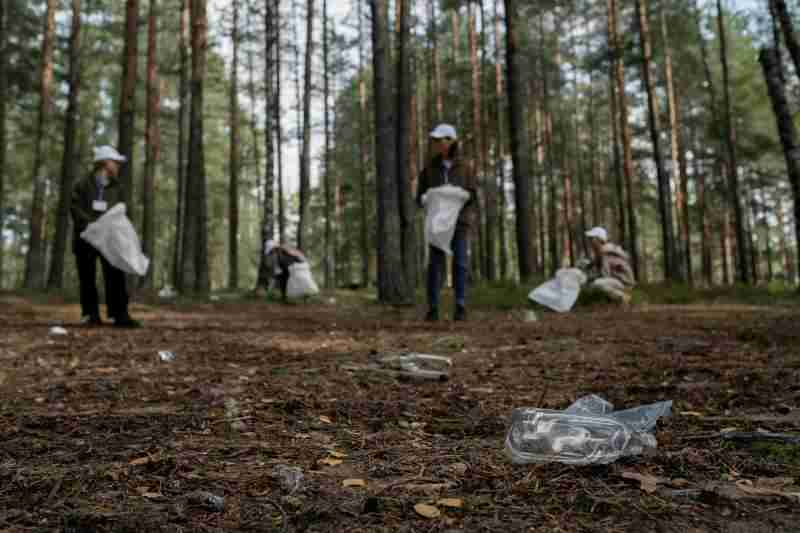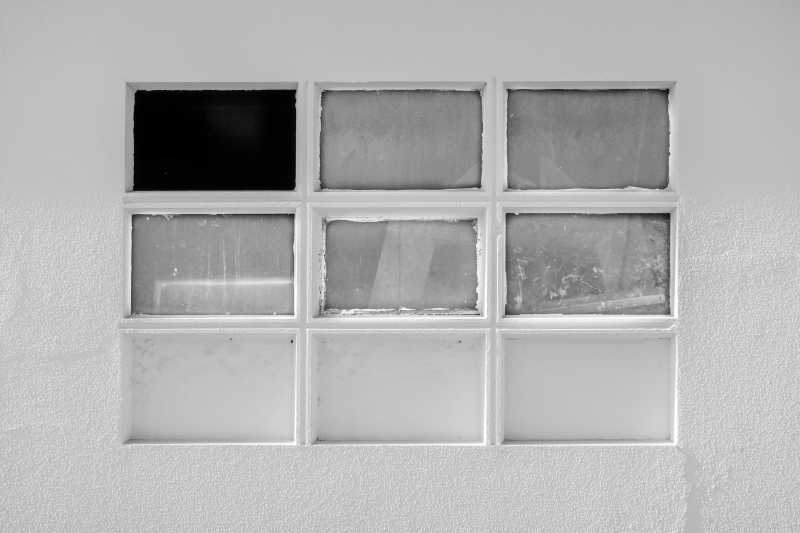Mold remediation is a critical process for maintaining a healthy living environment, yet many misconceptions surround it. At Projekt Restoration, your trusted experts in water, fire, and mold restoration, we understand the importance of dispelling these common myths. From the belief that all mold is toxic to the idea that DIY methods are sufficient for mold removal, misinformation can lead to inadequate responses to mold issues. Our comprehensive services include mold assessment, biohazard cleanup, and reconstruction, ensuring that your property is safe and restored to its original condition. In this blog, we will clarify these myths and provide you with the facts you need to make informed decisions about mold remediation. Join us as we explore the truth behind mold and how our professional services can help you effectively tackle any mold-related challenges.
Understanding Mold: What It Is and How It Grows

Mold is a type of fungus that thrives in moist environments, playing a crucial role in breaking down organic matter. Understanding mold is essential for effective remediation and prevention. Mold spores are ubiquitous in the environment and can enter homes through windows, doors, and ventilation systems. Once inside, they require moisture, warmth, and organic material to grow.
According to the Environmental Protection Agency (EPA), mold can begin to grow within 24 to 48 hours of water exposure. This rapid growth can lead to health issues, including respiratory problems and allergic reactions. It is important to address any water damage promptly to prevent mold proliferation.
Mold can appear in various colors, including black, green, and white, and can be found on surfaces such as wood, drywall, and carpets. The key to controlling mold growth is to manage moisture levels. Here are some effective strategies:
- Identify and fix leaks promptly.
- Use dehumidifiers in damp areas.
- Ensure proper ventilation in bathrooms and kitchens.
- Regularly clean and maintain gutters to prevent water accumulation.
As the CDC states, “Mold can cause a variety of health effects, and some people are more sensitive to mold than others.” For more information on mold assessment and remediation, consider visiting our mold assessment page or contact us for expert consulting. Understanding mold is the first step towards a healthier living environment.
Myth vs. Reality: The Truth About DIY Mold Removal

When it comes to mold remediation, many homeowners are misled by common myths that can lead to ineffective or even harmful DIY approaches. One prevalent misconception is that simply cleaning mold with bleach is sufficient for complete removal. In reality, bleach only addresses surface mold and does not penetrate porous materials where mold spores may reside. This can result in a quick return of mold growth, making it crucial to understand the proper methods for effective remediation.
Another myth is that all mold is toxic and poses a serious health risk. While some mold types can be harmful, many are harmless and can be managed with appropriate precautions. It’s essential to conduct a thorough mold assessment to identify the type of mold present and determine the best course of action.
Additionally, many believe that DIY mold removal is a cost-effective solution. However, without the right tools and expertise, homeowners may inadvertently spread mold spores, leading to more extensive damage and higher remediation costs. Professional services, such as mold removal, ensure that the problem is handled correctly, preventing future issues and safeguarding your home. Understanding these myths versus realities is vital for effective mold management and maintaining a healthy living environment.
The Role of Professionals in Mold Remediation

Mold remediation is a critical process that requires the expertise of trained professionals to ensure effective and safe removal of mold from affected areas. Many homeowners underestimate the complexity of mold issues, often believing that simple cleaning solutions or DIY methods are sufficient. However, professionals bring specialized knowledge and tools that are essential for thorough mold assessment and remediation.
These experts conduct a comprehensive mold assessment to identify the extent of the problem and the underlying causes, such as moisture intrusion or water damage. They utilize advanced techniques, including infrared thermal imaging, to detect hidden mold and moisture that may not be visible to the naked eye.
Additionally, professionals implement proper containment measures to prevent mold spores from spreading during the remediation process. They also ensure that the affected areas are thoroughly cleaned and restored, which may involve content cleaning and reconstruction if necessary. By relying on professionals, homeowners can avoid common pitfalls associated with mold remediation and ensure a healthier living environment. Understanding the vital role of these experts helps dispel myths surrounding mold remediation and emphasizes the importance of professional intervention in effectively addressing mold issues.
Common Misconceptions About Mold Testing
Mold testing is often surrounded by various misconceptions that can lead to confusion and ineffective remediation strategies. One common myth is that mold testing is always necessary before remediation can begin. In reality, if visible mold is present, immediate action is often recommended without the need for testing. Another misconception is that all mold is toxic. While some molds can produce harmful mycotoxins, many types are harmless and do not pose significant health risks. Understanding the difference is crucial for effective mold assessment.
Additionally, many believe that mold testing will provide a complete picture of the mold problem. However, testing can only reveal the types of mold present at the time of sampling and may not account for hidden mold or future growth. It’s also a myth that DIY mold testing kits are as reliable as professional assessments. These kits often lack the accuracy and thoroughness of expert evaluations, which can include advanced techniques like infrared thermal imaging to detect moisture issues that contribute to mold growth.
To ensure effective remediation, it’s essential to consult with professionals who can provide accurate information and tailored solutions. For more details on how to address mold issues, visit our contact page.
Mold Remediation: Is It Always Necessary?
Mold remediation is often viewed as a necessary step whenever mold is detected, but this isn’t always the case. Understanding when remediation is essential can help homeowners make informed decisions. Not all mold growth poses a significant health risk; some types of mold are harmless and can be managed with simple cleaning methods. For instance, small patches of mold on non-porous surfaces can often be cleaned with soap and water, eliminating the need for professional intervention.
However, if mold is extensive or has penetrated porous materials, such as drywall or carpeting, professional mold removal may be necessary. Additionally, if individuals in the home have allergies or respiratory issues, even minor mold infestations should be addressed promptly to prevent health complications.
It’s also important to consider the source of moisture that caused the mold growth. If the underlying issue, such as a leak or high humidity, is not resolved, mold is likely to return. In such cases, a thorough mold assessment and remediation plan can help ensure a safe living environment. Ultimately, while not every mold situation requires professional remediation, understanding the context and potential risks is crucial for maintaining a healthy home.
The Impact of Mold on Health: Debunking Myths
Mold is often misunderstood, leading to widespread myths about its health effects and remediation. One common misconception is that all molds are toxic and pose serious health risks. In reality, while some molds can produce harmful mycotoxins, many are harmless and can be found in everyday environments. The severity of health impacts largely depends on individual sensitivities and the extent of mold exposure.
Another myth is that simply cleaning mold with bleach is sufficient for remediation. While bleach can kill surface mold, it does not penetrate porous materials, allowing mold to regrow. Effective mold assessment and remediation require a comprehensive approach that includes identifying the source of moisture, proper removal techniques, and preventive measures to avoid future growth.
Additionally, many believe that mold problems can be resolved without professional help. However, extensive mold infestations often require specialized equipment and expertise to ensure complete removal and to address underlying issues. Homeowners facing mold challenges should consider consulting professionals for effective consulting services. Understanding these myths is crucial for maintaining a healthy living environment and ensuring that mold issues are addressed properly. By debunking these misconceptions, individuals can make informed decisions about mold remediation and protect their health.
Preventing Mold: Strategies Beyond Remediation
Mold can pose significant health risks and damage to properties, making effective prevention essential. While remediation is crucial for addressing existing mold issues, proactive strategies can significantly reduce the likelihood of mold growth in the first place. One of the most effective methods is controlling moisture levels in your home. This can be achieved through proper dehumidification techniques, ensuring that humidity levels remain below 60%. Regularly inspecting areas prone to moisture, such as basements, bathrooms, and kitchens, can help identify potential problems early.
Additionally, maintaining good ventilation is vital. Ensure that air can circulate freely, particularly in areas where moisture is generated. Installing exhaust fans in bathrooms and kitchens can help expel humid air. Furthermore, sealing any leaks in roofs, walls, or plumbing can prevent water intrusion, which is a primary contributor to mold growth.
Another important strategy is to use mold-resistant materials during construction or renovations. This includes mold-resistant drywall and paints, which can provide an extra layer of protection. Regular mold assessments can also help identify hidden mold issues before they escalate.
By implementing these strategies, homeowners can create a healthier living environment and minimize the risk of mold-related problems. Taking these proactive steps is essential for long-term mold prevention and maintaining the integrity of your property.
In conclusion, understanding the common myths surrounding mold remediation is crucial for homeowners and property managers alike. By debunking these misconceptions, we empower ourselves to make informed decisions about mold management and remediation. It’s essential to recognize that mold is not just a cosmetic issue; it can pose serious health risks if left untreated. Relying on professional services and following best practices can ensure effective remediation and prevent future growth. Remember, knowledge is your best ally in maintaining a safe and healthy environment. By staying informed and vigilant, you can protect your home and loved ones from the potential dangers of mold.





